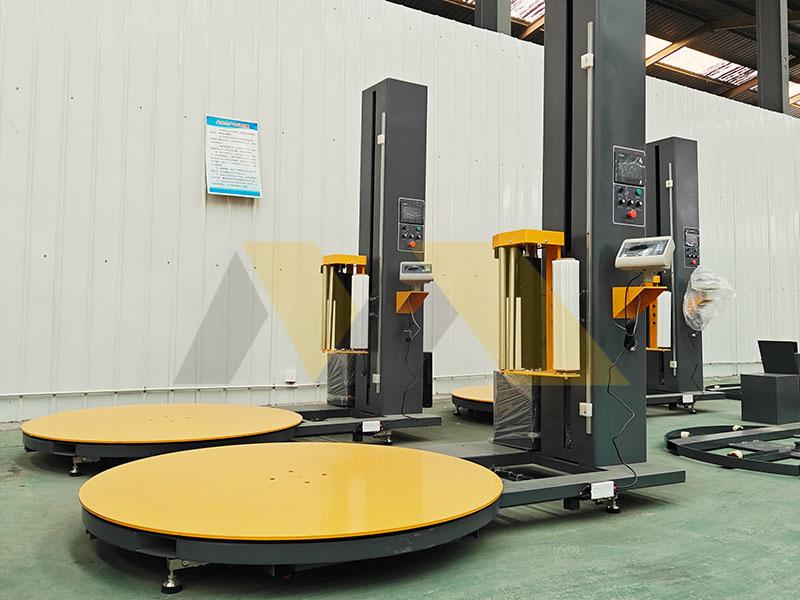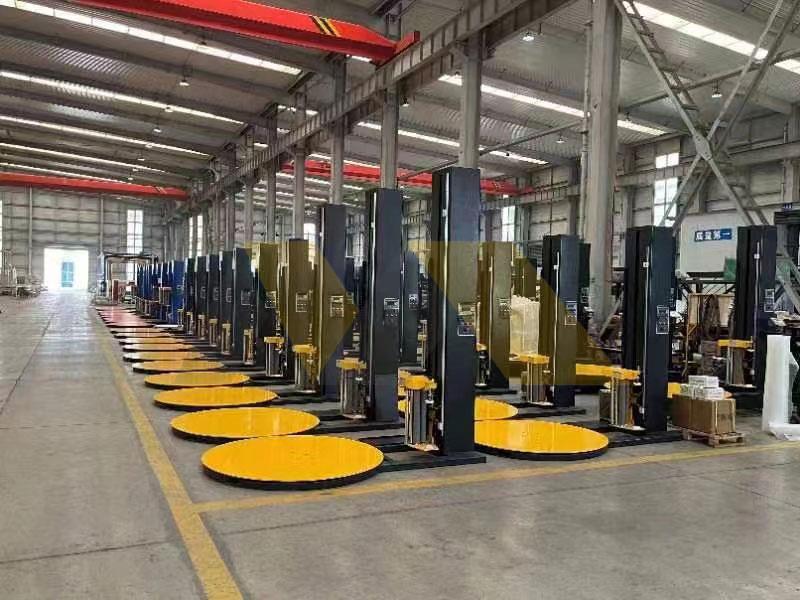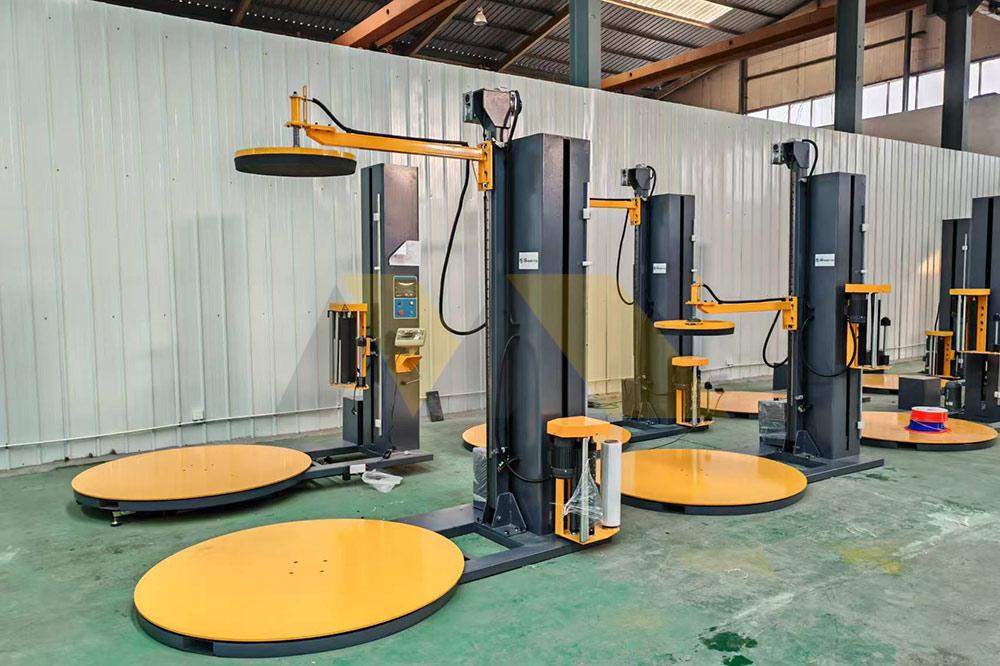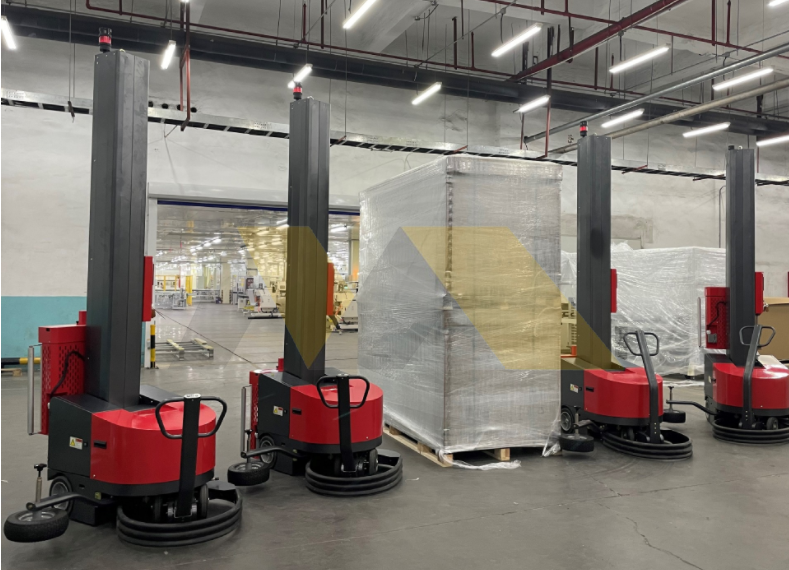Having worked with distributors globally, I see customers struggle with unstable shipments daily. Goods can shift during transit due to poor pallet securing. A pallet wrapping system solves this by automating load stabilization.
A pallet wrapping system integrates machinery and materials to secure products on pallets using stretch film. It prevents shifting during transport through controlled rotation and tension systems, replacing manual labor with consistent efficiency while reducing film waste by up to 40%.
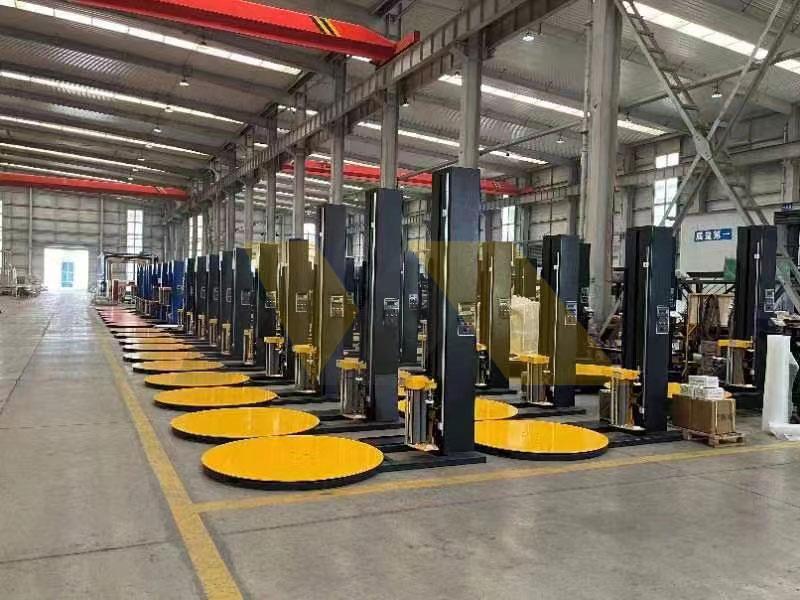
Now let me explain core components addressing common buyer questions—essential knowledge before choosing equipment. We’ll cover terminology costs with industry insights I’ve gathered supplying machines to North America.
What is a pallet wrapping machine called?
Imagine rushing to reinforce unstable pallets before shipment. You need speed and reliability. Operators commonly call these machines “stretch wrappers1,” categorized by automation level.
Pallet wrapping machines are termed either semi-automatic, automatic, or robotic stretch wrappers based on operatortouch requirements and integration capacity with conveyor systems.
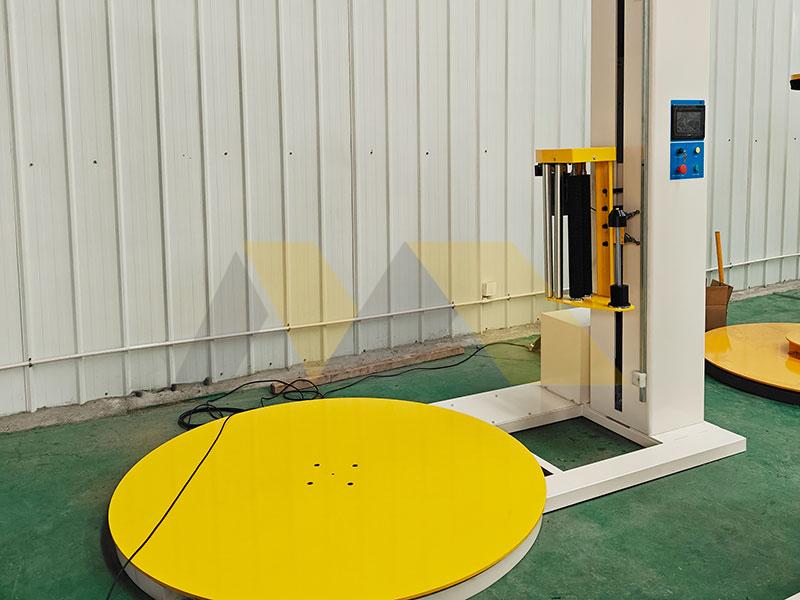
Understanding these categories prevents costly mismatches. As a factory owner, I categorize them by hands-on demands:
Hands-On Requirements Comparison
| Machine Type | Operator Role | Ideal For |
|---|---|---|
| Semi-Automatic | Loads/unloads pallets + starts cycles | Low-volume facilities (under 50 pallets/day) |
| Automatic | Monitors automated loading/unloading | Medium-volume warehouses |
| Robotic | Zero-touch fully programmable operation | High-volume distribution centers |
The terms indicate workflow integration depth. Robotic units cost more but reduce labor needs longterm. Recently, a Canadian distributor saved 15 hours weekly switching from semi-automatic2c](https://robopacusa.com/automatic-stretch-wrappers/)[^3] to our robotic wrappers. Your pallet volume dictates the optimal type. I recommend evaluating daily throughput before choosing—reach out with your numbers via WhatsApp 0086 13505379893 for personalized advice.
What is a pallet wrap?
Picture your goods arriving damaged after bumpy transit. Poor film choice often causes this. Pallet wrap is stretchable plastic securing loads, but quality variations impact durability dramatically.
Pallet wrap is polyethylene film engineered to stretch around palletized goods, creating containment force through elastic recovery. Key variants include hand wrap (15-20 microns) for manual use and machine-grade film (20-30 microns) with UV/anti-tear additives for equipment.
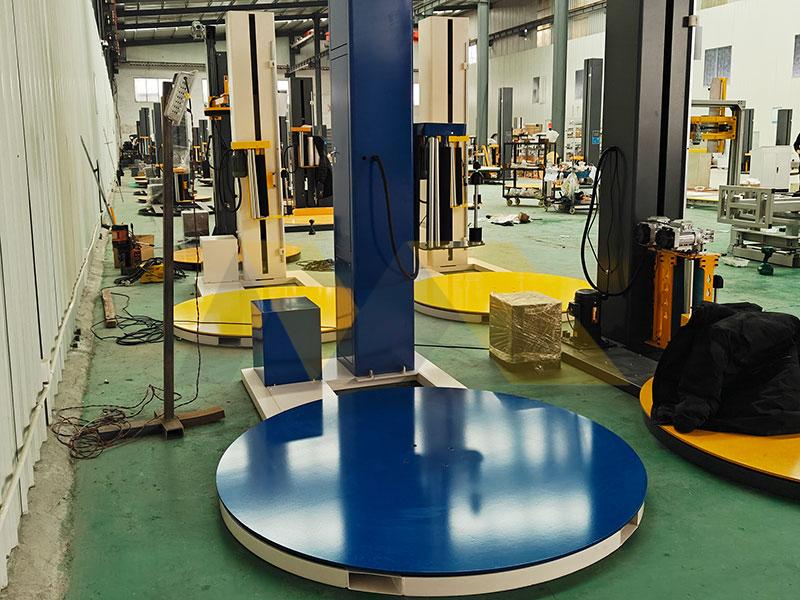
Choosing incorrect film risks load failures. Over three years auditing shipments, I identified core factors:
Stretch Film Performance Guide
| Parameter | Hand Wrap | Machine Film |
|---|---|---|
| Thickness Range | 15-18 microns | 20-23 microns |
| Pre-Stretch Capacity | None | Up to 300% elasticity |
| Durability Features | Basic cling | UV protection, tear resistance |
| Cost Efficiency | Lower (more film used/pallet) | Higher (less waste) |
Machine film’s pre-stretch technology3 maximizes coverage while cutting material usage. For buyers, consider Canadian climate challenges like warehouse temperature swings affecting adhesiveness. Last January we shipped a truckload of winter-grade film to Montreal optimized for cold storage. If unclear about requirements, email specifications to [email protected] for film compatibility checks4—prevents costly mispurchases.
What is the correct way to wrap a pallet?
Seeing poorly secured pallets causes frustration. Incorrect techniques waste film and increase toppling risks. Effective wrapping balances tension patterns with containment force.
The correct method involves overlapping film layers by 50%-75% in ascending/descending spiral patterns while maintaining consistent 10-15kg tension. Use "top sheeting" (3–4 extra top layers) to reinforce unstable loads plus corner protectors against tears.
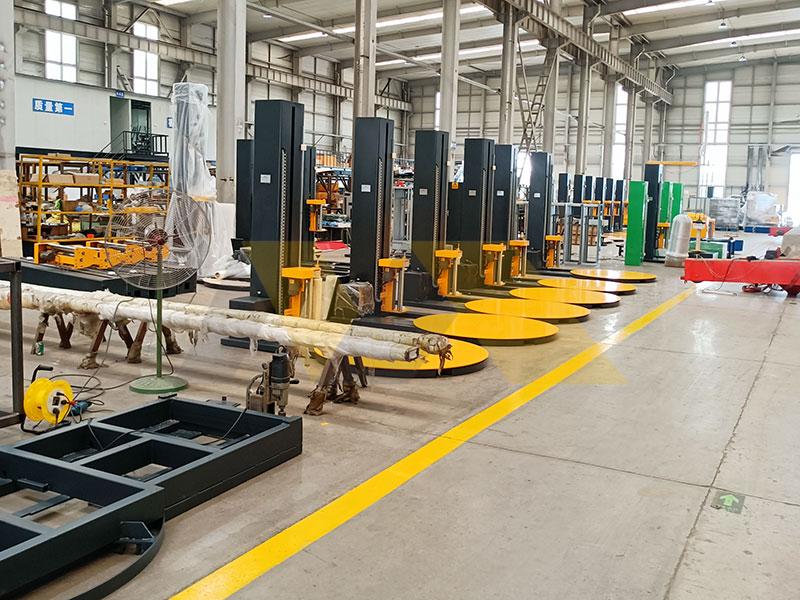
Different products need unique approaches:
| Load Type | Wrapping Pattern | Critical Tips |
|---|---|---|
| Uniform Boxes | Standard spiral | 3 revolutions bottom reinforcement |
| Irregular Items | Diagonal + spiral | Corner boards mandatory |
| High-Center Weight | Double-top sheeting | 5-7 top revolutions essential |
| Fragile Goods | Low-tension spirals | Stress-free application required |
A beverage exporter client reduced damage claims by 30% after we recommended diagonal wrapping for his glass bottles. Don’t risk shipments—submit your load photos via our contact form for technique blueprints. Testing shows proper methods save film and insurance costs long-term.
How much does it cost to wrap a pallet?
Calculating costs involves film and labor factors manual wrapping ignores. Our clients saw 60% savings switching to machines.
A manually wrapped pallet costs $1.20-$3.00 USD in film/labor while semi-auto machines reduce it to $0.60-$1.80 USD. Upfront equipment investment ($3,000-$25,000) pays back in 14 months via waste reduction.
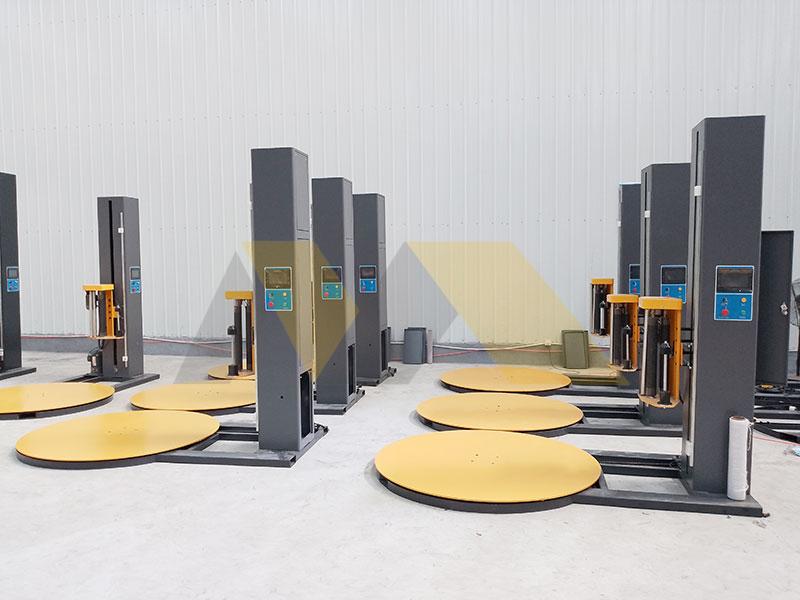
Expense Breakdown (5,000 Pallets/Year)
| Cost Factor | Manual Method | Semi-Auto Machine |
|---|---|---|
| Film Consumption | 420 rolls ($4,200) | 240 rolls ($2,400) |
| Labor Hours | 500 hours ($15,000) | 105 hours ($3,150) |
| Damage Losses | 6% ($9,000) | 1.2% ($1,800) |
| Annual Total | $28,200 | $7,350 |
A Japanese distributor recovered his machine investment in 10 months after cutting labor hours by 80%. Prices vary with customization needs—our entry-level wrappers start at $3,200. For precise quotes: WhatsApp 0086 13505379893 with pallet dimensions/volume.
Conclusion
Understanding stretch wrapper types, film specifications, wrapping techniques5, and cost dynamics ensures optimal pallet stabilization. Invest in knowledge before machinery.
-
Learn about stretch wrappers and how they can improve efficiency in your shipping processes. ↩
-
Discover the advantages of semi-automatic wrappers for low-volume facilities and their operational efficiency. ↩
-
Discover how pre-stretch technology maximizes film usage and reduces costs. ↩
-
Learn how to ensure the right film is used for your specific pallet wrapping needs. ↩
-
Explore effective wrapping techniques to ensure load stability and minimize damage. ↩

